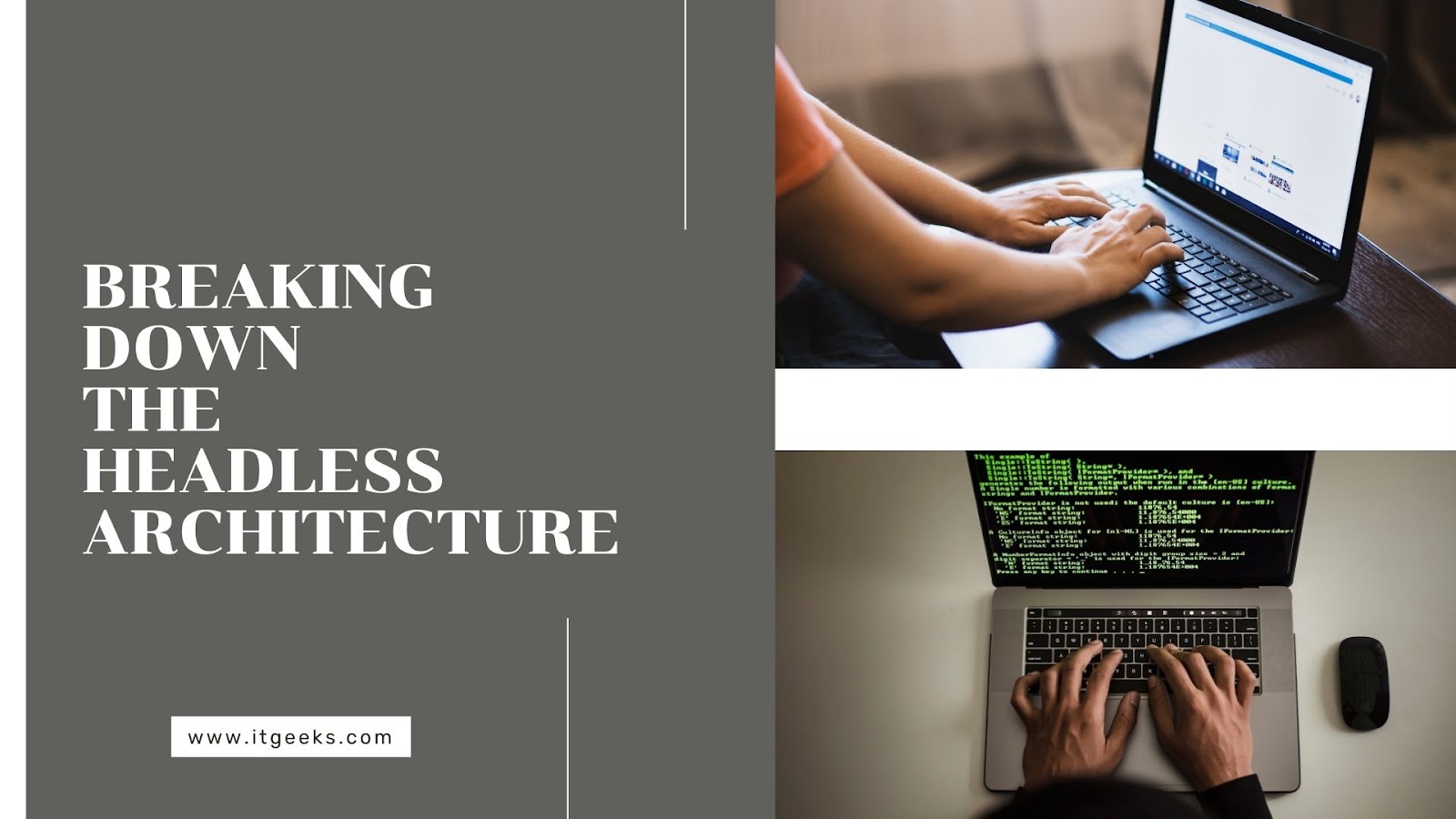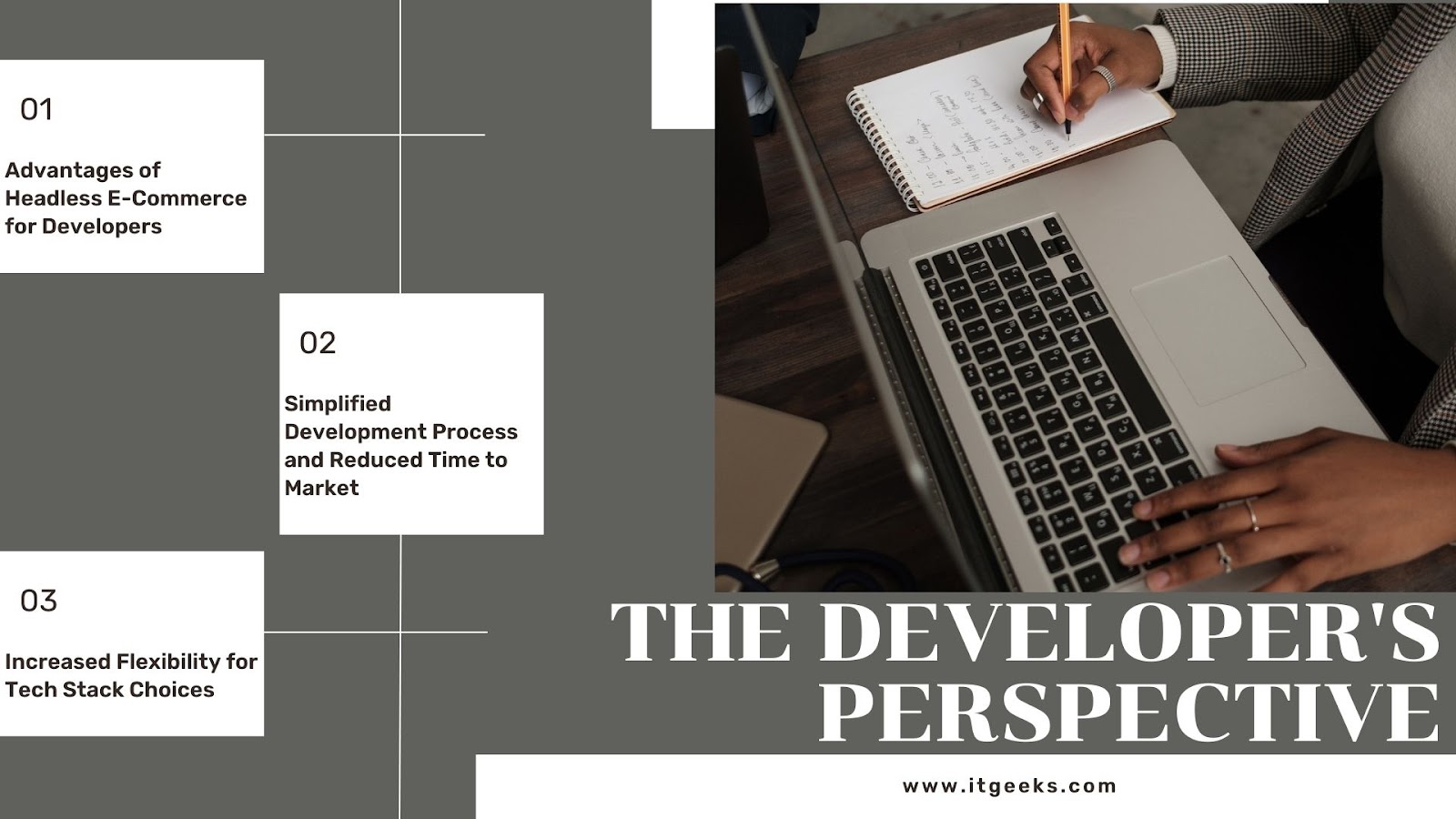- Table of Contents
- Introduction
- Understanding Headless E-Commerce
- Breaking Down the Headless Architecture
- Enhancing the User Experience
- Empowering Omni Channel Selling
- Scaling and Flexibility
- The Developer’s Perspective
- Overcoming Challenges and Considerations
- Conclusion
Introduction
E-commerce has experienced significant growth in recent years, revolutionizing the way businesses sell their products and services. With the increasing popularity of online shopping, it has become crucial for businesses to provide seamless and engaging experiences to their customers.
In this context, the concept of headless e-commerce has emerged as a game-changer. Headless e-commerce refers to a modern approach where the front-end presentation layer and the back-end commerce functionality are decoupled. Unlike traditional monolithic architectures, headless e-commerce allows businesses to deliver personalized and consistent experiences across multiple channels and touchpoints.
Understanding Headless E-Commerce

Definition of Headless E-Commerce and Its Key Features
Headless e-commerce is a modern approach to building online stores that separates the front-end presentation layer from the back-end functionality. In a traditional monolithic e-commerce architecture, the front-end (the user interface that customers interact with) and the back-end (the server-side processes that handle business logic, data, and integrations) are tightly coupled. This coupling often results in limitations in terms of customization, scalability, and flexibility.
In contrast, headless e-commerce decouples the front-end from the back-end, allowing businesses to use different technologies and frameworks for each layer. The front-end, also known as the “head,” can be built using modern JavaScript frameworks like React or Angular, while the back-end handles the core e-commerce functionality, such as inventory management, order processing, and payment integration.
Key features of headless e-commerce include:
- API-driven architecture: Headless e-commerce relies on APIs (Application Programming Interfaces) to enable communication between the front-end and back-end. APIs serve as the bridge, allowing seamless data exchange and integration with other systems or channels.
- Microservices: Headless e-commerce embraces a microservices architecture, where specific functionalities are divided into smaller, independent services. This modular approach allows businesses to scale individual components as needed, making the system more resilient and adaptable.
- Customizable user experiences: With headless e-commerce, businesses have the freedom to create highly customized front-end experiences. They can design unique user interfaces, implement interactive features, and optimize the customer journey according to their brand’s requirements.
Comparison with Traditional Monolithic E-Commerce Architectures
To understand the benefits of headless e-commerce, it’s essential to compare it with traditional monolithic e-commerce architectures.
In a monolithic architecture, the front-end and back-end are tightly coupled, often built on a single platform or technology stack. While this approach has been widely used, it can limit businesses in terms of flexibility and innovation. Making changes or introducing new features requires modifying the entire system, leading to lengthy development cycles and potential disruptions.
Headless e-commerce, on the other hand, offers significant advantages:
- Flexibility: Headless e-commerce enables businesses to select the best tools and technologies for each layer independently. This flexibility allows them to leverage the latest innovations and stay ahead of the competition. For example, they can integrate a powerful analytics tool into the front-end or use a specialized payment gateway in the back-end without affecting the other components.
- Scalability: Headless e-commerce architectures are inherently scalable. By using microservices, businesses can scale specific functionalities that require more resources, such as inventory management or order processing, without affecting the entire system. This scalability ensures a consistent user experience, even during peak traffic or demand spikes.
- Faster time to market: With headless e-commerce, development teams can work in parallel on the front-end and back-end, accelerating the time to market. Since these layers are decoupled, changes or updates to one layer do not disrupt the other. This separation also enables more efficient collaboration between front-end and back-end developers, resulting in faster iterations and continuous improvements.
Benefits of Headless E-Commerce for Businesses and Customers
Headless e-commerce offers numerous benefits for both businesses and customers:
- Enhanced user experiences: By decoupling the front-end, businesses can create highly immersive and personalized user experiences. They can experiment with different design approaches, implement responsive interfaces for various devices, and deliver dynamic content tailored to each customer’s preferences. This level of customization improves engagement, increases conversion rates, and fosters brand loyalty.
- Omnichannel selling: Headless e-commerce empowers businesses to deliver consistent experiences across multiple touchpoints, including websites, mobile apps, social media platforms, voice assistants, and even physical stores. This omnichannel approach allows customers to seamlessly interact with the brand, browse products, and make purchases from their preferred channels, improving convenience and customer satisfaction.
- Agile innovation: The flexibility of headless e-commerce enables businesses to adapt quickly to changing market needs and consumer expectations. They can easily experiment with new technologies, integrate emerging platforms or channels, and roll out new features without overhauling the entire system. This agility gives businesses a competitive edge and allows them to stay at the forefront of innovation.
- Improved performance: Headless e-commerce architectures often result in faster page loading times and improved overall performance. Since the front-end and back-end are separated, developers can optimize each layer independently. This optimization reduces unnecessary code dependencies and allows for more efficient caching strategies, resulting in a smoother and faster user experience.
Breaking Down the Headless Architecture

Explanation of the Decoupled Front-End and Back-End
In a headless e-commerce architecture, the front-end and back-end are decoupled, meaning they operate independently of each other. This decoupling allows businesses to have separate technology stacks and development teams for each layer.
The front-end, also known as the presentation layer, is responsible for the user interface and the visual experience that customers interact with. It includes components such as product listings, shopping carts, checkout processes, and overall website design. With a decoupled front-end, businesses have the freedom to use modern frameworks, like React, Vue.js, or Angular, to build highly interactive and responsive user interfaces.
On the other hand, the back-end, or the application layer, handles the core e-commerce functionalities. It includes tasks such as inventory management, order processing, payment integration, customer data management, and third-party integrations. The back-end is responsible for processing requests from the front-end, retrieving and storing data, and executing business logic. It can be built using any suitable technology stack, such as Node.js, Java, or Python, depending on the specific requirements of the business.
The decoupling of the front-end and back-end allows businesses to update and modify each layer independently. For example, they can redesign the user interface without impacting the back-end processes or add new functionalities to the back-end without affecting the front-end presentation. This separation enables faster development cycles, easier maintenance, and the ability to adapt to market changes more efficiently.
APIs and Microservices: The Backbone of Headless E-Commerce
APIs (Application Programming Interfaces) and microservices play a crucial role in enabling communication and collaboration between the front-end and back-end in a headless e-commerce architecture.
APIs serve as the bridge between the front-end and back-end layers, allowing them to exchange data and communicate seamlessly. They define the protocols and standards for how the two layers interact with each other. With APIs, the front-end can send requests for product information, user data, or order processing to the back-end, and the back-end can respond with the requested data or perform the necessary actions.
Microservices, on the other hand, are modular, independent services that handle specific functionalities within the e-commerce system. Instead of building a monolithic application that handles all tasks, businesses break down their e-commerce processes into smaller, manageable services. For example, there can be separate microservices for inventory management, payment processing, user authentication, and recommendation engines.
Each microservice operates independently and can be developed, deployed, and scaled individually. This modular approach offers several advantages, including improved scalability, fault isolation (if one microservice fails, it doesn’t affect the others), and the ability to update or replace specific functionalities without disrupting the entire system.
Enhancing the User Experience
In the world of e-commerce, providing an exceptional user experience is crucial for attracting and retaining customers. Headless e-commerce offers a range of features and advantages that significantly enhance the user experience, leading to higher customer satisfaction and increased conversion rates. In this section, we will explore some key aspects of user experience improvement in headless e-commerce.

Customizable front-end experiences: Design freedom and brand consistency
One of the primary advantages of headless e-commerce is the ability to create customizable front-end experiences. With traditional e-commerce platforms, the front-end design is tightly coupled with the back-end functionalities, limiting the flexibility for design changes and updates. However, with headless e-commerce, the front-end and back-end are decoupled, allowing businesses to have complete design freedom.
This design freedom empowers businesses to create unique and visually appealing online stores that align with their brand identity. Whether it’s the layout, color scheme, typography, or overall aesthetics, businesses can tailor the front-end design to reflect their brand personality and create a memorable shopping experience for customers. By providing a visually cohesive and consistent brand experience, businesses can establish trust and loyalty among their target audience.
Mobile responsiveness and adaptive design for a seamless mobile experience
With the increasing dominance of mobile devices in online shopping, providing a seamless mobile experience is no longer optional—it’s a necessity. Headless e-commerce enables businesses to implement mobile responsiveness and adaptive design effortlessly. By utilizing responsive design principles, the front-end of a headless e-commerce store can automatically adjust and adapt to different screen sizes and resolutions, ensuring optimal viewing and interaction on mobile devices.
A seamless mobile experience means that customers can browse products, make purchases, and navigate the store effortlessly, regardless of the device they are using. This mobile-centric approach is essential for capturing the attention of on-the-go customers and maximizing conversion rates. With headless e-commerce, businesses can optimize their online stores for mobile devices, delivering a smooth and enjoyable shopping experience for their mobile-savvy customers.
Personalization and dynamic content delivery
Personalization is a key driver of customer engagement and satisfaction. Headless e-commerce provides robust personalization capabilities by leveraging customer data and advanced algorithms. By integrating with customer relationship management (CRM) systems and employing machine learning techniques, businesses can gather valuable insights about individual customers, such as browsing history, purchase patterns, and preferences.
With this data, businesses can deliver personalized product recommendations, tailored content, and targeted promotions to each customer. Headless e-commerce platforms allow the seamless integration of personalization engines, enabling dynamic content delivery based on real-time customer behavior. By showing relevant and personalized content, businesses can enhance the user experience, increase customer engagement, and drive more conversions.
Faster page loading and improved performance
In the fast-paced digital world, every second counts. Slow-loading pages and poor website performance can be detrimental to the user experience, leading to frustration and abandoned shopping carts. Headless e-commerce excels in delivering faster page loading times and improved overall performance.
With the decoupled architecture of headless e-commerce, the front-end can be optimized for speed and efficiency independently from the back-end. By leveraging modern front-end frameworks and technologies, businesses can create lightweight and optimized front-end applications that load quickly and respond promptly to user interactions. The reduced dependency on back-end processing and server-rendered pages significantly improves performance, resulting in a smoother and more enjoyable shopping experience for customers.
Moreover, headless e-commerce enables businesses to leverage content delivery networks (CDNs) effectively. CDNs store website assets in multiple locations worldwide, allowing faster content delivery to users regardless of their geographical location. This global distribution of content reduces latency and ensures that customers can access the online store quickly, irrespective of their location.
Empowering Omni Channel Selling
Omnichannel selling has become a crucial aspect of modern e-commerce. It refers to the ability to seamlessly integrate and provide a consistent shopping experience across multiple touchpoints, such as websites, mobile apps, voice assistants, and more. Headless e-commerce is at the forefront of empowering businesses to effectively implement omnichannel strategies. In this section, we will explore how headless e-commerce enables integration with various touchpoints, ensures cross-platform consistency, and streamlines inventory management and order fulfillment across channels.

Integration with various touchpoints: websites, mobile apps, voice assistants, etc.
One of the key advantages of headless e-commerce is its ability to integrate with a wide range of touchpoints that customers interact with. Traditional monolithic e-commerce platforms often struggle to provide a unified experience across multiple channels. With headless architecture, businesses can effortlessly connect their e-commerce backend with websites, mobile apps, voice assistants, social media platforms, and other emerging technologies.
By integrating with various touchpoints, businesses can meet their customers wherever they are and provide a seamless shopping experience. For instance, a customer might browse products on a mobile app, add items to their cart, and later complete the purchase on a website or even through a voice command with a smart speaker. Headless e-commerce allows for flexible integration, enabling businesses to adapt to changing consumer behaviors and preferences.
Cross-platform consistency and unified customer experience
Maintaining cross-platform consistency is vital for delivering a unified customer experience. With headless e-commerce, businesses can ensure that the look, feel, and functionality of their online store remain consistent across all touchpoints. The decoupling of the front-end from the back-end allows for independent updates and modifications to the user interface without disrupting the underlying e-commerce logic.
For example, a customer who starts browsing products on their smartphone should have a consistent experience when switching to their desktop computer or any other touchpoint. The product catalog, pricing information, user preferences, and shopping cart should seamlessly synchronize across all platforms. This consistency not only enhances the user experience but also builds trust and brand loyalty.
Streamlined inventory management and order fulfillment across channels
Managing inventory and fulfilling orders efficiently across multiple channels can be complex. Headless e-commerce simplifies this process by providing centralized inventory management and order fulfillment capabilities. The decoupled architecture allows businesses to have a single source of truth for inventory data, ensuring real-time updates across all touchpoints.
With headless e-commerce, businesses can streamline their order fulfillment workflows. When a customer places an order, the system can automatically allocate and reserve the inventory from the central repository. This ensures accurate stock levels and reduces the risk of overselling or disappointing customers. Furthermore, businesses can leverage integrations with third-party logistics providers and shipping carriers to automate the fulfillment process, improving efficiency and reducing errors.
By unifying inventory management and order fulfillment across channels, headless e-commerce enables businesses to deliver a consistent and reliable shopping experience. Customers can have the freedom to purchase products through their preferred touchpoints while businesses efficiently manage their inventory and fulfill orders seamlessly.
Scaling and Flexibility
In the ever-evolving landscape of e-commerce, businesses must be prepared to handle high levels of traffic and demand spikes, while also maintaining the ability to experiment, test, and introduce new features without disrupting their systems. This is where the scalability and flexibility offered by headless e-commerce come into play. Let’s explore how headless architecture addresses these crucial aspects and empowers businesses to thrive in the digital marketplace.

Handling High Traffic and Demand Spikes
One of the primary challenges for any e-commerce business is dealing with sudden surges in website traffic and demand. Traditional monolithic e-commerce platforms often struggle to handle these spikes efficiently, resulting in slow page loading times, potential crashes, and a poor user experience. In contrast, headless e-commerce provides a robust solution to scale effortlessly.
With a decoupled front-end and back-end, headless architecture allows businesses to scale their infrastructure independently. By utilizing cloud-based services and Content Delivery Networks (CDNs), businesses can distribute their website content across multiple servers and geographies, effectively reducing latency and improving performance. This distributed infrastructure ensures that even during peak traffic periods, the website remains responsive and delivers a seamless user experience.
Furthermore, headless e-commerce platforms enable horizontal scaling, meaning businesses can add additional servers or containers to their system to accommodate increased traffic. This elasticity ensures that the website can handle high volumes of concurrent users without sacrificing performance or functionality.
Enabling Rapid Experimentation and A/B Testing
In today’s competitive digital landscape, experimentation and A/B testing are crucial for optimizing conversion rates and enhancing the user experience. Headless e-commerce empowers businesses to experiment with various design elements, user flows, and personalized experiences, all without disrupting the underlying infrastructure.
By decoupling the front-end and back-end, businesses can iterate and test new front-end experiences independently from the back-end logic. This allows for rapid deployment of changes, as developers can simply update the front-end code without affecting the underlying business logic. As a result, businesses can run A/B tests, measure the impact of different variations, and make data-driven decisions to enhance conversion rates and user engagement.
Additionally, headless architecture enables integration with third-party tools and services for comprehensive analytics and user tracking. This data-driven approach provides valuable insights into user behavior, allowing businesses to optimize their website based on real-time feedback and continually improve the customer experience.
Adding New Features and Functionalities Without Disrupting the System
In the fast-paced digital landscape, businesses need the ability to quickly adapt and introduce new features and functionalities to stay ahead of the competition. Traditional e-commerce platforms often face challenges when it comes to adding new features, as changes in one area of the system can have unintended consequences on other parts.
Headless e-commerce eliminates these constraints by providing a modular and flexible architecture. With a decoupled approach, businesses can add new features to the front-end without disrupting the underlying back-end systems. This allows for seamless integration of innovative technologies, such as augmented reality, chatbots, or voice assistants, to enhance the user experience and drive engagement.
Furthermore, headless e-commerce platforms often provide extensive APIs and microservices that facilitate the integration of third-party services and extensions. This opens up a world of possibilities for businesses to leverage specialized tools for marketing automation, inventory management, payment gateways, and more, without the need for extensive custom development or disrupting the core system.
The flexibility of headless architecture extends to content management as well. With headless CMS platforms, businesses can manage their content separately from the front-end presentation layer, enabling easy content updates and modifications without the need for developer intervention. This empowers marketing teams to deliver personalized content and campaigns efficiently, ensuring that the website stays fresh and relevant.
The Developer’s Perspective
Developers play a crucial role in the success of any e-commerce project, and headless e-commerce offers a range of advantages that greatly benefit them. In this section, we will explore the specific advantages of headless e-commerce from a developer’s perspective, including a simplified development process, reduced time to market, and increased flexibility for tech stack choices.

Advantages of Headless E-Commerce for Developers
- Separation of Concerns: In traditional monolithic e-commerce architectures, the front-end and back-end are tightly coupled, making it challenging to make changes or introduce new features without impacting the entire system. However, with headless e-commerce, developers can separate the front-end and back-end, allowing them to work independently and focus on their respective areas of expertise. This separation of concerns enhances collaboration and makes the development process more efficient.
- Specialization and Expertise: With headless e-commerce, developers have the opportunity to specialize in specific technologies and frameworks. Front-end developers can focus on building engaging user interfaces using modern JavaScript frameworks like React or Vue.js, while back-end developers can concentrate on creating robust APIs and microservices to handle business logic and data management. This specialization enables developers to leverage their expertise and deliver high-quality solutions.
- Improved Development Workflow: Headless e-commerce empowers developers with an improved development workflow. Since the front-end and back-end are decoupled, developers can work on their respective tasks concurrently. This parallel development approach reduces dependencies and bottlenecks, leading to faster iterations and shorter development cycles. It also enables developers to test and deploy changes independently, resulting in a more streamlined and efficient development process.
Simplified Development Process and Reduced Time to Market
- Reusability and Modularity: Headless e-commerce allows developers to create reusable components and modules that can be leveraged across different projects. This modularity facilitates code maintenance and reduces redundancy. Developers can build a library of components and functionalities, making it easier to develop new e-commerce experiences or adapt existing ones to different channels or touchpoints. This reusability accelerates development timelines and significantly reduces time to market.
- Rapid Prototyping and Iteration: Headless e-commerce offers developers the ability to rapidly prototype and iterate on the front-end user interface without impacting the underlying back-end. They can quickly test different designs, layouts, and features, gathering feedback and making improvements in an agile manner. This iterative approach ensures that the final product meets user expectations and allows for continuous enhancements based on user feedback and market trends.
- API-First Approach: Headless e-commerce emphasizes an API-first approach, where the back-end exposes well-documented APIs that can be consumed by various front-end applications. This approach provides developers with clear boundaries and contract definitions, enabling them to build front-end experiences without worrying about the underlying complexities of the back-end. Developers can focus on creating engaging user interfaces and leverage the power of APIs to retrieve and update data seamlessly.
Increased Flexibility for Tech Stack Choices
- Freedom of Technology Selection: In traditional e-commerce architectures, developers are often bound to specific technologies or frameworks dictated by the monolithic platform. However, with headless e-commerce, developers have the freedom to choose the most suitable technologies and tools for each layer of the application. They can select the best front-end frameworks, programming languages, databases, caching mechanisms, and deployment strategies based on their expertise and project requirements. This flexibility empowers developers to leverage cutting-edge technologies and create innovative solutions.
- Microservices and Scalability: Headless e-commerce encourages the use of microservices, which are small, independently deployable services that focus on specific business functionalities. Developers can leverage microservices to build scalable and modular architectures that can handle high traffic and accommodate future growth. The decoupled nature of headless e-commerce allows developers to scale individual services as needed, ensuring optimal performance and responsiveness.
- Integration Capabilities: Headless e-commerce facilitates seamless integration with third-party services and APIs. Developers can leverage a wide range of services, such as payment gateways, shipping providers, marketing tools, analytics platforms, and customer relationship management (CRM) systems. This integration flexibility enables developers to create tailored solutions that meet specific business requirements and provide a holistic e-commerce experience for customers.
Overcoming Challenges and Considerations
Potential challenges in adopting headless e-commerce

While headless e-commerce offers numerous benefits, there are some potential challenges that businesses may face when adopting this approach. It’s important to be aware of these challenges and plan accordingly to ensure a smooth transition. Here are some common challenges and how to overcome them:
- Learning curve: Shifting to a headless architecture requires a change in mindset and understanding of how the front-end and back-end systems interact. This may involve a learning curve for developers and stakeholders who are accustomed to traditional monolithic architectures. To overcome this challenge, investing in training and education for the development team can help them adapt to the new approach.
- Technical complexity: Headless e-commerce involves working with multiple APIs and microservices to connect the front-end and back-end systems. This can introduce technical complexity, especially when integrating with various platforms and third-party services. Thorough planning, documentation, and collaboration between development teams and stakeholders are crucial to managing this complexity effectively.
- Increased development effort: In a headless architecture, developers need to build and maintain separate front-end applications that consume data from the back-end APIs. This can result in increased development effort compared to traditional monolithic e-commerce solutions. To mitigate this challenge, leveraging existing headless e-commerce platforms and frameworks can provide a foundation and reduce development effort.
Best practices for successful implementation and migration
To ensure a successful implementation and migration to headless e-commerce, businesses can follow these best practices:
- Define clear objectives: Clearly define the goals and objectives you aim to achieve with headless e-commerce. Whether it’s improving performance, enhancing the user experience, or expanding to new channels, having a clear vision will guide your implementation strategy.
- Conduct a thorough assessment: Evaluate your current e-commerce infrastructure, including your front-end and back-end systems. Identify the pain points, limitations, and areas for improvement. This assessment will help you make informed decisions about adopting a headless architecture and selecting the right platform or solution.
- Plan for scalability: Headless e-commerce provides scalability, but it’s essential to plan for it from the beginning. Anticipate future growth and ensure your architecture can handle increased traffic and demand. Consider using cloud-based infrastructure and scalable microservices to handle spikes in traffic effectively.
- Adopt an agile approach: Headless e-commerce enables rapid experimentation and iteration. Embrace an agile development methodology, allowing for quick iterations, testing, and feedback loops. This iterative approach will help you adapt and refine your implementation based on real-world insights and user feedback.
- Prioritize API design and documentation: APIs are the foundation of headless e-commerce. Invest time and effort in designing robust and well-documented APIs that are easy to use and understand. Clear documentation will enable front-end developers and third-party integrators to work seamlessly with your APIs.
- Ensure cross-team collaboration: Headless e-commerce requires close collaboration between development teams, designers, marketers, and other stakeholders. Foster a culture of collaboration, encourage open communication, and establish cross-functional teams to ensure a smooth implementation process.
Security and performance considerations
When adopting headless e-commerce, businesses should prioritize security and performance to safeguard customer data and provide a seamless user experience. Here are some key considerations:
- API security: As APIs play a central role in headless e-commerce, it’s crucial to implement robust security measures. Secure API authentication and authorization mechanisms, such as OAuth or API keys, to ensure that only authorized requests are processed. Additionally, employ encryption techniques like SSL/TLS to protect data transmission.
- Compliance with data regulations: Depending on your target markets, ensure compliance with relevant data protection and privacy regulations such as GDPR or CCPA. Implement necessary measures to handle user data securely and obtain consent when required.
- Content delivery and caching: To optimize performance, consider implementing a content delivery network (CDN) to deliver static assets efficiently. Utilize caching mechanisms to reduce server load and improve response times. Dynamic content caching strategies can be implemented to strike a balance between performance and real-time updates.
- Load testing and performance monitoring: Perform thorough load testing to identify potential bottlenecks and optimize system performance. Continuous monitoring of server response times, error rates, and user experience metrics will help you proactively address performance issues and optimize the headless architecture.
- Regular security audits: Conduct regular security audits and vulnerability assessments to identify and address any potential security gaps. Keep your systems and dependencies up to date with security patches and follow industry best practices to protect against emerging threats.
By addressing these challenges and considerations, businesses can ensure a successful transition to headless e-commerce, leveraging its benefits while maintaining security and performance standards.
Conclusion
In conclusion, headless e-commerce offers numerous benefits and opportunities for businesses in the ever-evolving world of online selling. By decoupling the front-end and back-end, this innovative architecture provides unparalleled flexibility, enabling businesses to create highly customized and seamless user experiences. With headless e-commerce, companies can leverage APIs and microservices to integrate with various touchpoints and deliver consistent omnichannel experiences. Moreover, the scalability and flexibility of headless e-commerce empower businesses to handle high traffic, experiment with new features, and rapidly adapt to changing market demands.
For businesses looking to stay ahead in the competitive e-commerce landscape, exploring headless e-commerce is a crucial step. The ability to deliver personalized, mobile-responsive experiences, along with faster page loading times, can significantly enhance customer satisfaction and increase conversion rates. Additionally, headless e-commerce enables businesses to adapt and scale their online presence more efficiently, catering to the evolving needs and preferences of their customers. By embracing headless e-commerce, companies can position themselves at the forefront of innovation and create a competitive advantage in the market.
Read More:
- Tips and best practices for starting and growing an online store.
- The Ultimate Guide to Static Pages on Shopify: How to Build a Strong Foundation for Your Online Store
- What are the 4 Types of Digital Marketing?
- Top Trends in Digital Marketing for 2023
- Why Shopify is the most secure and reliable CMS choice?
- The Impact of Design on Conversion Rates
- The Dos and Don’ts of Advertising on Social Media Platforms
- The Complete Guide to Google AdWords: From Setup to Success
- The Power of Native Advertising: Driving Engagement and Building Trust
- The Ultimate On-Page SEO Checklist for 2023
- The Ultimate Guide to Increasing Your Shopify Conversion Rates
- SEO vs Paid Ads: Which One Brings More Sales in Shopify?
- 10 SEO Tips to Supercharge Your Shopify Store Traffic?
FAQ (Frequently Asked Questions):
While implementing headless e-commerce does introduce some security considerations, it does not inherently make your system more vulnerable. By following best practices for API security, implementing proper authentication and authorization measures, and regularly updating and monitoring your systems, you can ensure the security of your headless e-commerce infrastructure.
Headless e-commerce does require technical expertise to implement and maintain. However, there are various headless e-commerce platforms and solutions available that provide user-friendly interfaces and simplified development processes, making them accessible to businesses with limited technical resources. It’s important to choose a solution that aligns with your technical capabilities and consider partnering with experts or agencies if needed to ensure a successful implementation.
Headless e-commerce offers several advantages. Firstly, it enables businesses to create highly tailored and engaging front-end experiences, resulting in improved customer satisfaction. Additionally, the headless architecture allows for seamless omnichannel selling, empowering businesses to reach customers across various touchpoints. It also provides scalability and flexibility, allowing for easy experimentation and the addition of new features without disrupting the system.
Headless e-commerce refers to an architecture where the front-end presentation layer is decoupled from the back-end commerce functionality. Unlike traditional e-commerce platforms, which have tightly integrated front-end and back-end, headless e-commerce allows for greater flexibility and customization in designing user experiences.
Headless e-commerce can benefit businesses of various sizes and industries. Whether you’re a small startup or a large enterprise, if you value customization, flexibility, and a seamless user experience, headless e-commerce can be a valuable solution. It is particularly beneficial for businesses with complex product catalogs, multiple sales channels, or a strong focus on branding and design.
Yes, transitioning to a headless e-commerce architecture typically requires some changes to your existing infrastructure. It involves separating the front-end and back-end systems and implementing APIs to facilitate communication between them. However, with the right planning and implementation approach, the transition can be smooth and result in long-term benefits for your business.





